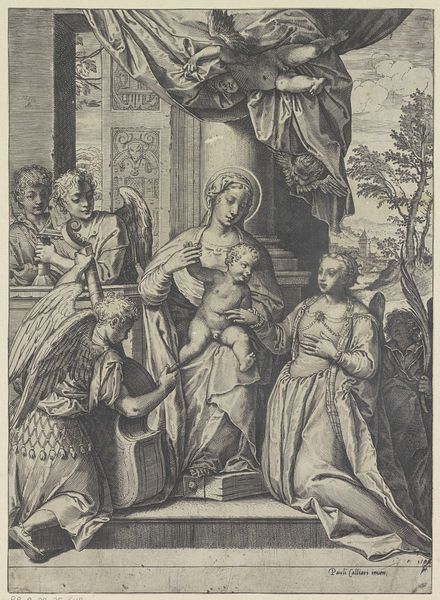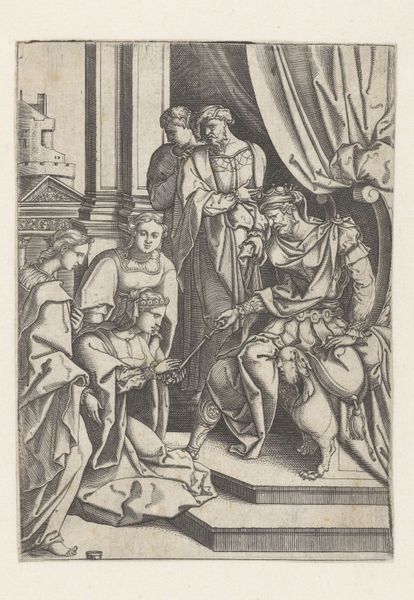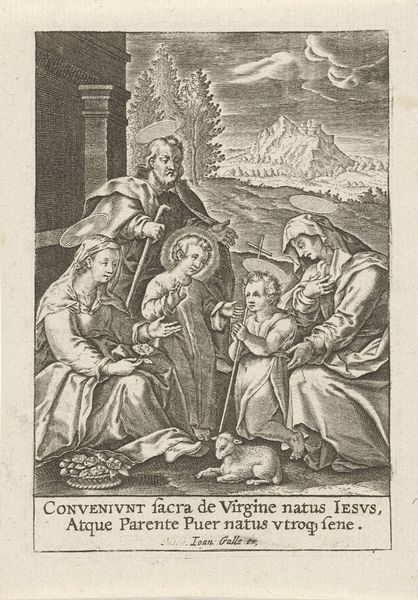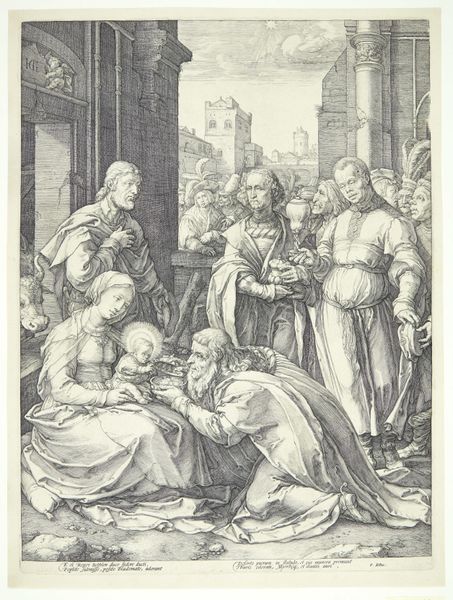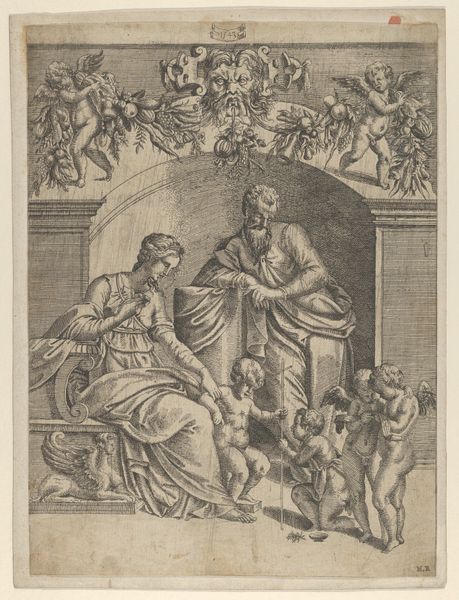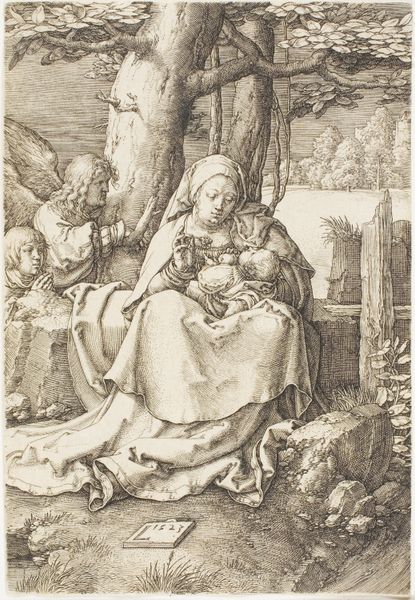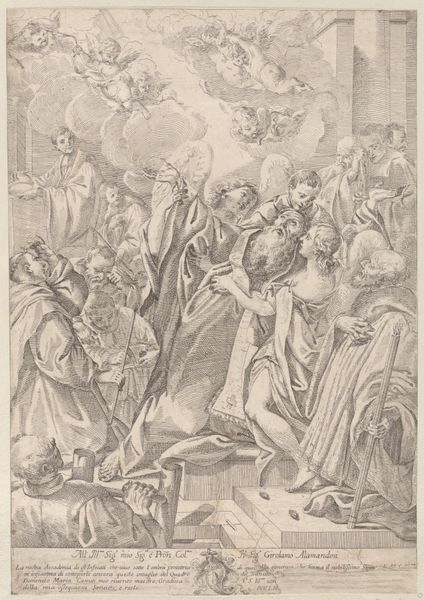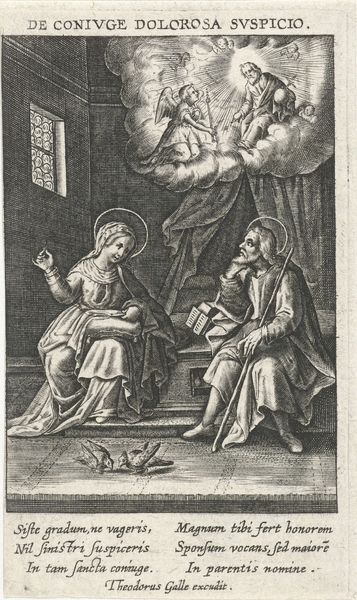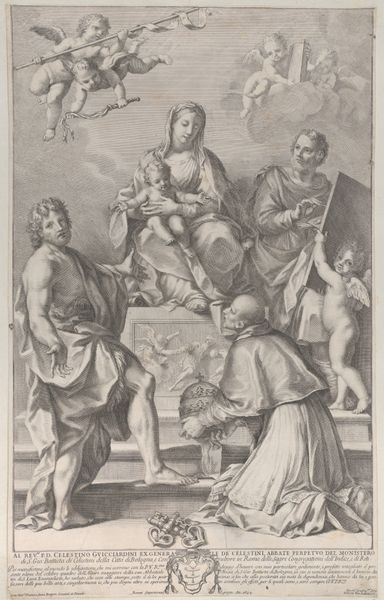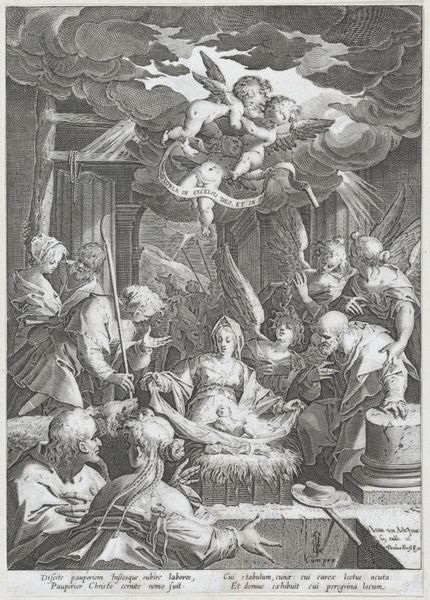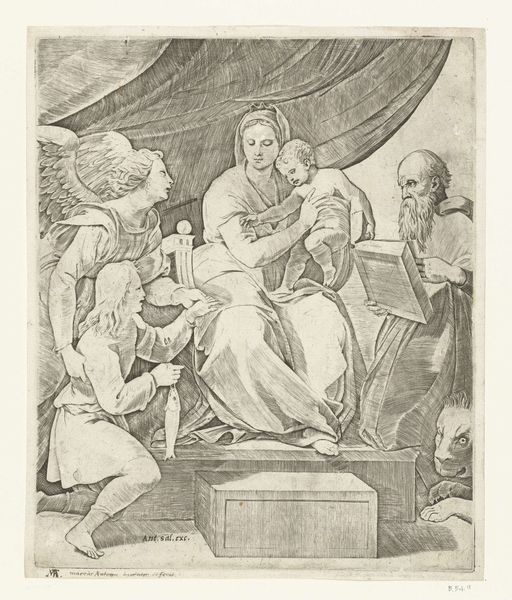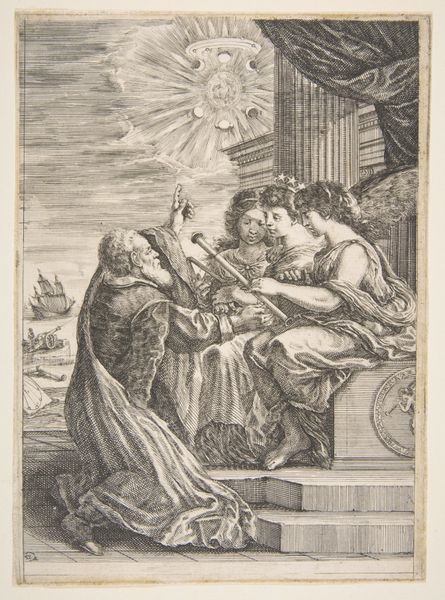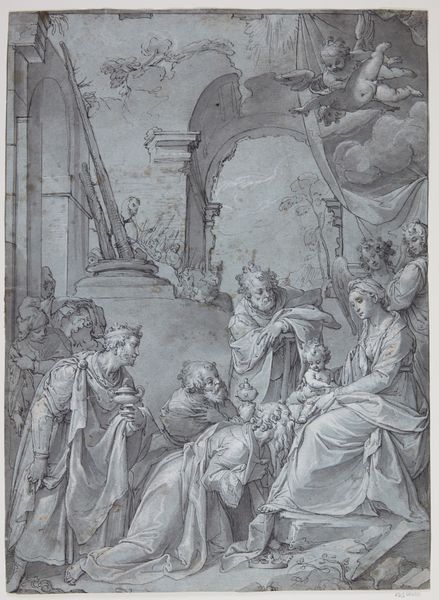
The mystic marriage of Saint Catherine who sits at center with the Christ child, angels with instruments at the left 1585
0:00
0:00
drawing, print
#
drawing
# print
#
figuration
#
pencil drawing
#
history-painting
#
italian-renaissance
Dimensions: Sheet (Trimmed): 11 9/16 × 8 7/8 in. (29.3 × 22.6 cm)
Copyright: Public Domain
Editor: This print, "The Mystic Marriage of Saint Catherine" by Agostino Carracci, made in 1585... I’m immediately struck by the incredible detail achieved through the medium of engraving. It's so delicate and precise. What can you tell me about this piece? Curator: Well, from a materialist perspective, consider the social and economic context of printmaking in 16th-century Italy. This wasn't just about art; it was about reproduction, dissemination, and the market for images. How would a print like this have been consumed? Who would have been buying it? Editor: Presumably, religious institutions or wealthy individuals? Curator: Exactly. The availability of such prints democratized art in a way, extending access beyond the elite. Now, think about the process itself: the labor involved in creating the original artwork and then translating it into a print. The engraver isn't simply copying; they are interpreting and transforming the image through their craft and skill, engaging the consumption of craft with a traditional medium. Editor: So the value isn't solely in the image itself but also in the labor and the materials used to produce and distribute it? Curator: Precisely! Look at the detail in the drapery and the textures achieved. These aren't just aesthetic choices; they're displays of skill and markers of the engraver's expertise within a specific social system of production. Who are these figures, and what materials identify them? What societal consumption do the garments worn by St. Catherine, the Virgin, and the angels reveal? Editor: It gives me a new perspective, focusing on the who, how, and where it was made and the consumption habits of the market, as much as the image. It’s about labor, commodity, and class, just as much as the narrative, if not more. Curator: And how understanding that process changes our perception and relationship with the work itself. What does that realization mean to your impression of art now?
Comments
No comments
Be the first to comment and join the conversation on the ultimate creative platform.
